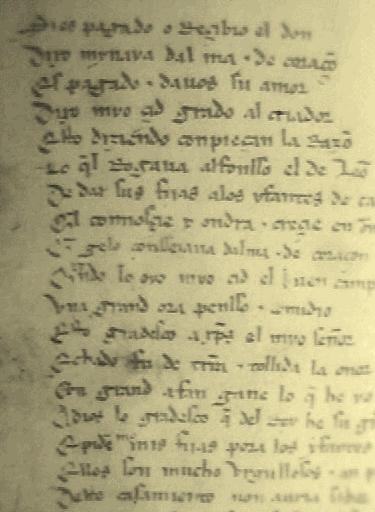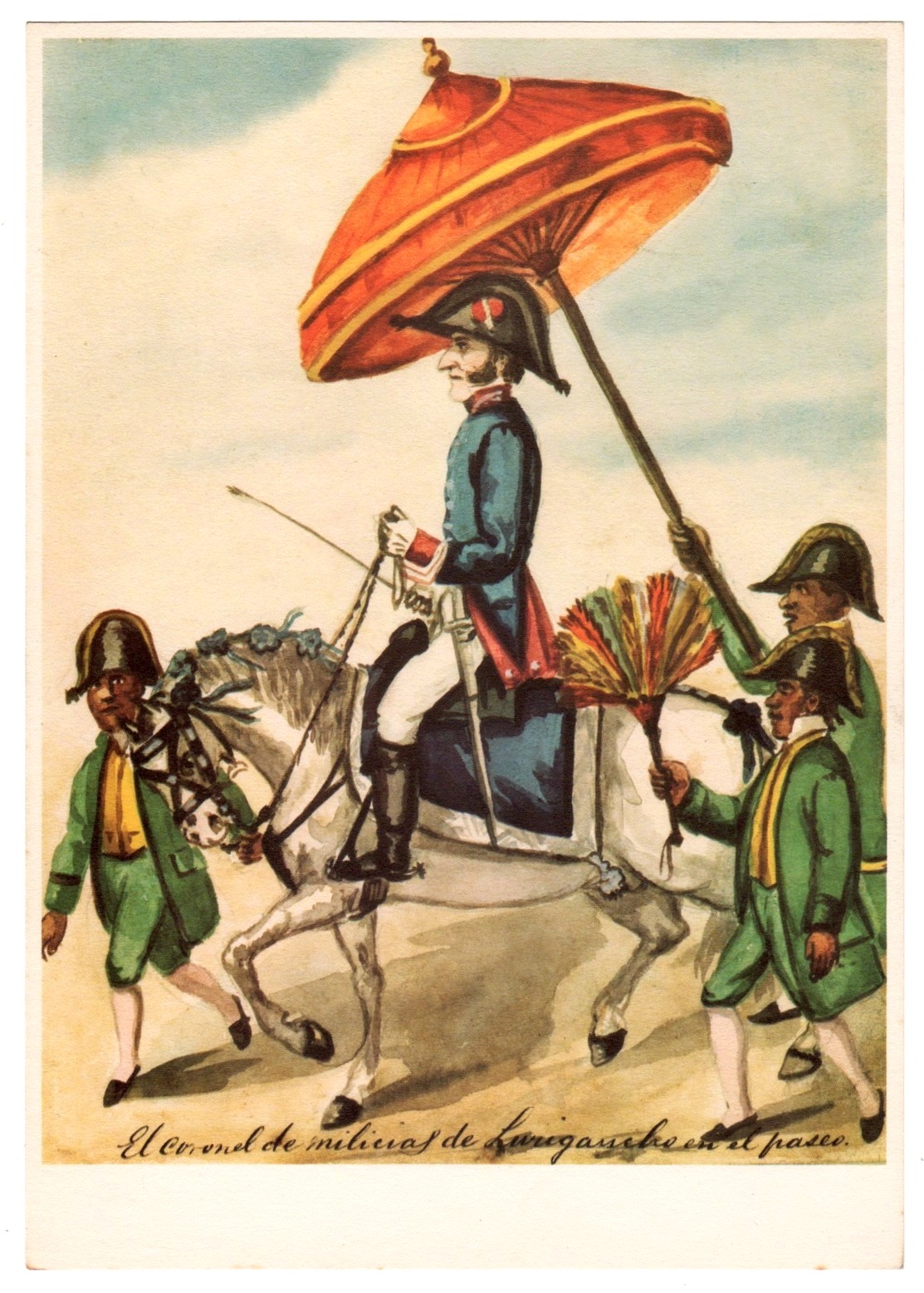|
Peruvian Spanish
Peruvian Spanish () is a family of dialects of the Spanish language that have been spoken in Peru since its introduction by Spanish conquistadors in 1532. There are five varieties spoken in the country, by about 94.4% of the population. The five Peruvian dialects are Andean Spanish, Peruvian Coastal Spanish, Andean-Coastal Spanish, Equatorial Spanish, and Amazonic Spanish. History The Spanish language first arrived in Peru in 1532. During colonial and early republican times, the Spanish spoken colloquially on the coast and in the cities of the highland possessed strong local features, but as a result of dialect leveling in favor of the standard language, the language of urban Peruvians today is more or less uniform in pronunciation throughout most of the country. Vestiges of the older dialect of the coast can be found in the speech of Afro-Peruvians, which retains Andalusian features such as the aspiration or deletion of final /s/ and the deletion of final /r/. The dialect o ... [...More Info...] [...Related Items...] OR: [Wikipedia] [Google] [Baidu] |
Peru
Peru, officially the Republic of Peru, is a country in western South America. It is bordered in the north by Ecuador and Colombia, in the east by Brazil, in the southeast by Bolivia, in the south by Chile, and in the south and west by the Pacific Ocean. Peru is a Megadiverse countries, megadiverse country, with habitats ranging from the arid plains of the Pacific coastal region in the west, to the peaks of the Andes mountains extending from the north to the southeast of the country, to the tropical Amazon basin rainforest in the east with the Amazon River. Peru has Demographics of Peru, a population of over 32 million, and its capital and largest city is Lima. At , Peru is the List of countries and dependencies by area, 19th largest country in the world, and the List of South American countries by area, third largest in South America. Pre-Columbian Peru, Peruvian territory was home to Andean civilizations, several cultures during the ancient and medieval periods, and has one o ... [...More Info...] [...Related Items...] OR: [Wikipedia] [Google] [Baidu] |
Vulgar Latin
Vulgar Latin, also known as Colloquial, Popular, Spoken or Vernacular Latin, is the range of non-formal Register (sociolinguistics), registers of Latin spoken from the Crisis of the Roman Republic, Late Roman Republic onward. ''Vulgar Latin'' as a term is both controversial and imprecise. Spoken Latin existed for a long time and in many places. Scholars have differed in opinion as to the extent of the differences, and whether Vulgar Latin was in some sense a different language. This was developed as a theory in the nineteenth century by François Just Marie Raynouard, Raynouard. At its extreme, the theory suggested that the written register formed an elite language distinct from common speech, but this is now rejected. The current consensus is that the written and spoken languages formed a continuity much as they do in modern languages, with speech tending to evolve faster than the written language, and the written, formalised language exerting pressure back on speech. ''Vulgar ... [...More Info...] [...Related Items...] OR: [Wikipedia] [Google] [Baidu] |
Ecuador
Ecuador, officially the Republic of Ecuador, is a country in northwestern South America, bordered by Colombia on the north, Peru on the east and south, and the Pacific Ocean on the west. It also includes the Galápagos Province which contains the Galapagos Islands in the Pacific, about west of the mainland. The country's Capital city, capital is Quito and its largest city is Guayaquil. The land that comprises modern-day Ecuador was once home to several groups of Indigenous peoples in Ecuador, indigenous peoples that were gradually incorporated into the Inca Empire during the 15th century. The territory was Spanish colonization of the Americas, colonized by the Spanish Empire during the 16th century, achieving independence in 1820 as part of Gran Colombia, from which it emerged as a sovereign state in 1830. The legacy of both empires is reflected in Ecuador's ethnically diverse population, with most of its million people being mestizos, followed by large minorities of Europe ... [...More Info...] [...Related Items...] OR: [Wikipedia] [Google] [Baidu] |
Quechua Languages
Quechua (, ), also called (, 'people's language') in Southern Quechua, is an indigenous language family that originated in central Peru and thereafter spread to other countries of the Andes. Derived from a common ancestral " Proto-Quechua" language, it is today the most widely spoken pre-Columbian language family of the Americas, with the number of speakers estimated at 8–10 million speakers in 2004,Adelaar 2004, pp. 167–168, 255. and just under 7 million from the most recent census data available up to 2011. Approximately 13.9% (3.7 million) of Peruvians speak a Quechua language. Although Quechua began expanding many centuries before the Incas, that previous expansion also meant that it was the primary language family within the Inca Empire. The Spanish also tolerated its use until the Peruvian struggle for independence in the 1780s. As a result, various Quechua languages are still widely spoken today, being co-official in many regions and the most spoken language in ... [...More Info...] [...Related Items...] OR: [Wikipedia] [Google] [Baidu] |
Loncco
Loncco was the name given to the peasants who lived in the rural area surrounding the city of Arequipa, Peru Peru, officially the Republic of Peru, is a country in western South America. It is bordered in the north by Ecuador and Colombia, in the east by Brazil, in the southeast by Bolivia, in the south by Chile, and in the south and west by the Pac ... till the end of the 20th century. The word Loncco can also involve their particular culture, dialect and way of living. Lonccos' traditions and unique way of speaking have been featured in Arequipean traditional songs, in the form of or Pampeñas. References Arequipa Social history of Peru {{Peru-hist-stub ... [...More Info...] [...Related Items...] OR: [Wikipedia] [Google] [Baidu] |
Afro-Peruvians
Black Peruvians or Afro-Peruvians are Peruvians of mostly or partially African descent. They mostly descend from enslaved Ethnic groups of Africa, Africans brought to Peru after the arrival of the conquistadors. Early history The first Africans arrived, as enslaved people, with the conquerors in 1521, and some, taken by force, with colonists to work, for no payment, in 1525. Between 1529 and 1537, when Francisco Pizarro was granted permits to import 363 Africans to colonial Peru, a large group of Africans were captured in order to provide, by force, labor for public construction, building bridges and road systems. They also fought alongside the conquistadors as soldiers and worked as personal servants and bodyguards. In 1533, enslaved Afro-Peruvians accompanied Spaniards in the conquest of Cuzco. Two types of African people were forced to Peru. Those born in Africa were commonly referred to as ''Bozal Spanish, negros bozales'' ("untamed blacks"), which was also used in a deroga ... [...More Info...] [...Related Items...] OR: [Wikipedia] [Google] [Baidu] |
Amazonic Spanish
Amazonic Spanish (''español amazónico''), also known as Charapa Spanish, Loreto-Ucayali Spanish or informally known in Peru simply as Jungle Spanish (''español de la selva''), is a variety of Spanish spoken in the Amazon, especially in the Peruvian provinces of Loreto, San Martín and Ucayali. Amazonic Spanish is also spoken in areas of Brazil adjoining Loreto and Ucayali and in the Amazonas Department of Colombia.Spanish in Brazil, http://www.spanish-in-the-world.net/Spanish/brasil.php Distinctive features Morphosyntax One of the distinguishing features of Amazonic Spanish is the method of constructing the possessive form: speakers say "de la ''X'' su ''Y''" (of the ''X'' its ''Y''), instead of standard Spanish "la ''Y'' de ''X''" (the ''Y'' of ''X''). Another distinctive grammatical feature is the use of possessive forms in place of certain genitive forms; compare standard Spanish "Le preguntó a la yaminahua ''delante de mí''" (He asked the Yaminahua woman ''in fro ... [...More Info...] [...Related Items...] OR: [Wikipedia] [Google] [Baidu] |
Equatorial Spanish
300px, Spanish dialects in Colombia (the sub-dialects of the Equatorial Spanish are represented in two colors). Equatorial Spanish, also called ''Coastal Colombian-Ecuadorian'' dialect or ''Chocoano'', is a dialect of Spanish spoken mainly in the coastal region of Ecuador, as well as in the bordering coastal areas of northern Peru and western Colombia. It is considered to be transitional between the Caribbean dialects and the Peruvian Coast varieties. Thus, the dialect sets the phonemical axis of accentual-tonal transition throughout the American varieties of Spanish, which extends geographically from the northern semi-low intonation of Central American and the Caribbean dialects (since only the European variants of Spanish are particularly low-pitched) to the sharp high intonation characteristic of the lands located south, typical of Peru, Chile, and Argentina. Therefore, the variant of Spanish spoken in the Ecuadorian coast and its neighboring western Andean plains, share ... [...More Info...] [...Related Items...] OR: [Wikipedia] [Google] [Baidu] |
Peruvian Coastal Spanish
Peruvians (''/peruanas'') are the citizens of Peru. What is now Peru has been inhabited for several millennia by cultures such as the Caral before the Spanish conquest in the 16th century. Peruvian population decreased from an estimated 5–9 million in the 1520s to around 600,000 in 1620 mainly because of infectious diseases carried by the Spanish. Spaniards and Africans arrived in large numbers in 1532 under colonial rule, mixing widely with each other and with Native Peruvians. During the Republic, there has been a gradual immigration of European people (especially from Spain and Italy, and to a lesser extent from Germany, France, Croatia, and the British Isles). Chinese and Japanese arrived in large numbers at the end of the 19th century. With 31.2 million inhabitants according to the 2017 Census. Peru is the fourth most populous country in South America. Its demographic growth rate declined from 2.6% to 1.6% between 1950 and 2000, and its population is expected to reach ... [...More Info...] [...Related Items...] OR: [Wikipedia] [Google] [Baidu] |
Andean Spanish
Andean Spanish is a dialect of Spanish spoken in the central Andes, from southern Colombia, with influence as far south as northern Chile and Northwestern Argentina, passing through Ecuador, Peru, and Bolivia. While similar to other Spanish dialects, Andean Spanish shows influence from Quechua, Aymara, and other indigenous languages, due to prolonged and intense language contact. This influence is especially strong in rural areas. Phonology * In Andean Spanish, the is never aspirated in the final position and so is pronounced , not , but it is sometimes pronounced apical, rather than laminal, a trait characteristic of Northern Spain. The apical sound is sometimes perceived as transitional between and , and it is associated with a large number of northern Spanish settlers in Andean region. In southern Bolivia and northern Chile, syllable-final /s/ is mostly aspirated. * As in all American dialects of Spanish, Andean Spanish has ( is not distinguished from ). Thus, ("ho ... [...More Info...] [...Related Items...] OR: [Wikipedia] [Google] [Baidu] |
Conquistadors
Conquistadors (, ) or conquistadores (; ; ) were Spanish Empire, Spanish and Portuguese Empire, Portuguese colonizers who explored, traded with and colonized parts of the Americas, Africa, Oceania and Asia during the Age of Discovery. Sailing beyond the Iberian Peninsula, they established numerous Colony, colonies and trade routes, and brought much of the "New World" under the dominion of Spain and Portugal. After Christopher Columbus's arrival in the West Indies in 1492, the Spanish, usually led by Hidalgo (nobility), hidalgos from the west and south of Spain, began building a colonial empire in the Caribbean using colonies such as Captaincy General of Santo Domingo, Santo Domingo, Captaincy General of Cuba, Cuba, and Captaincy General of Puerto Rico, Puerto Rico as their main bases. From 1519 to 1521, Hernán Cortés led the Spanish conquest of the Aztec Empire, ruled by Moctezuma II. From the territories of the Aztec Empire, conquistadors expanded Spanish rule to northern Ce ... [...More Info...] [...Related Items...] OR: [Wikipedia] [Google] [Baidu] |




